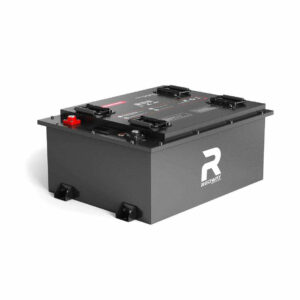How Can High-Capacity Battery Banks Power Off-Grid RV Appliances?
High-capacity battery banks enable off-grid RV living by storing energy from solar panels or generators to power appliances like refrigerators, air conditioners, and microwaves. Lithium-ion batteries, such as LiFePO4, are preferred for their efficiency, longer lifespan, and faster charging. Proper sizing, voltage compatibility, and energy management systems ensure reliable power without grid dependency.
Future of RV Battery Efficiency
What Are the Best Battery Types for Off-Grid RV Power?
Lithium-ion (LiFePO4) batteries dominate due to their lightweight design, 3,000–5,000 cycle lifespan, and 95% efficiency. Lead-acid batteries are cheaper but heavier and less durable. AGM batteries offer maintenance-free operation, while gel batteries excel in extreme temperatures. Lithium remains optimal for high-demand appliances and long-term cost savings.

When choosing between battery technologies, consider weight restrictions and usage patterns. Lithium batteries weigh 60% less than lead-acid equivalents – critical for RV weight distribution. For occasional campers, AGM batteries provide sufficient power at lower upfront costs. However, frequent travelers requiring air conditioning or induction cooking benefit from lithium’s rapid recharge capability (0-100% in 3 hours vs 8+ hours for lead-acid).
| Battery Type | Cycle Life | Weight (100Ah) | Efficiency |
|---|---|---|---|
| LiFePO4 | 3,000-5,000 | 31 lbs | 95% |
| AGM | 500-800 | 66 lbs | 85% |
| Gel | 600-1,000 | 70 lbs | 80% |
How Does Temperature Affect RV Battery Performance?
Lithium batteries operate optimally at 32°F–113°F but lose 20% efficiency below freezing. Lead-acid batteries suffer sulfation in cold and corrosion in heat. Use heated battery blankets or insulated compartments in winter. Avoid charging lithium below 32°F to prevent plating. Thermal sensors in BMS mitigate extreme temperature risks.
Temperature management requires proactive measures. In sub-freezing conditions, lithium batteries automatically reduce charge acceptance rates. Install thermal pads connected to RV power systems to maintain minimum operating temperatures. During summer, ensure battery compartments have 2-4 ventilation ports (1 sq inch per 100Ah) to dissipate heat. Temperature-compensated charging adjusts voltage based on ambient conditions – crucial for lead-acid systems where overcharging in heat accelerates water loss.
“Lithium-ion batteries revolutionized off-grid RVing by slashing weight and tripling cycle life. At Redway, we recommend pairing LiFePO4 with smart inverters and predictive load management to avoid downtime. Future systems will leverage AI to optimize energy use based on weather forecasts and usage patterns.” — Redway Power Solutions Engineer
- Can I use car batteries for my RV?
- No. Car batteries are designed for short bursts of energy, not deep cycling. Use deep-cycle RV batteries like LiFePO4 or AGM.
- How long do lithium RV batteries last?
- 3,000–5,000 cycles (8–15 years) at 80% depth of discharge. Lead-acid lasts 500–1,000 cycles.
- Do I need a generator with solar and batteries?
- Not necessarily, but a generator adds backup during low-sun periods. Hybrid systems with 600W+ solar and 400Ah batteries often eliminate generator needs.
